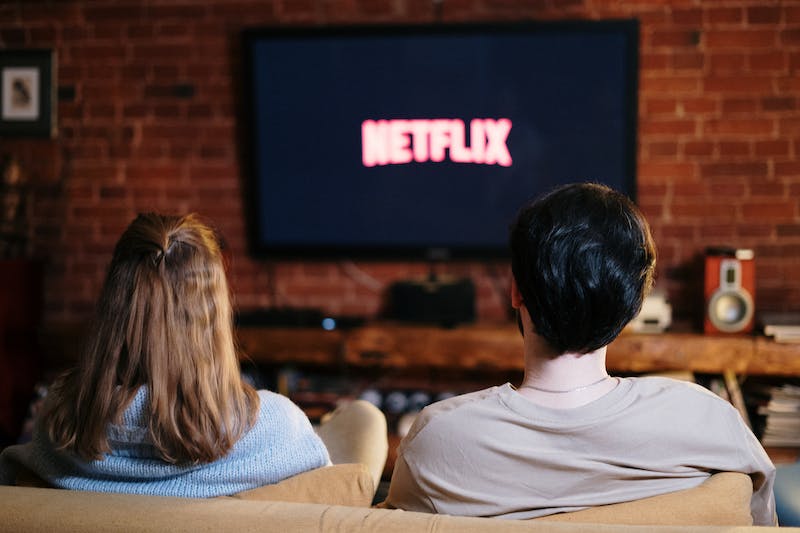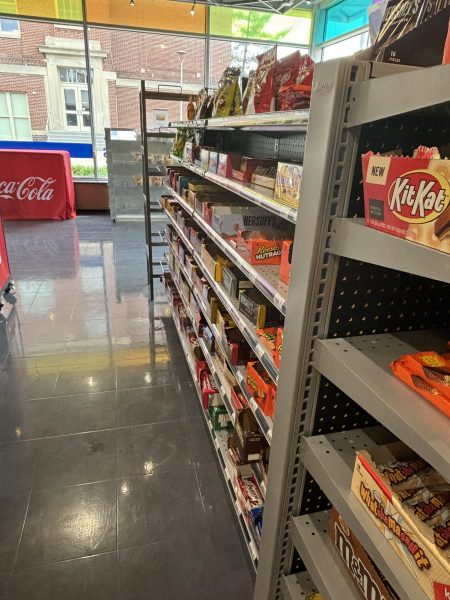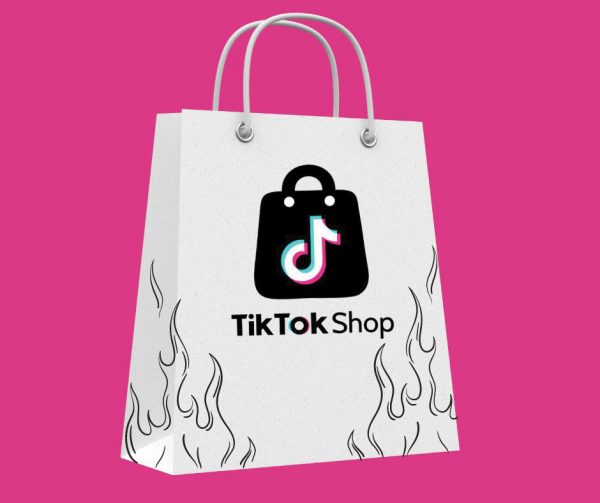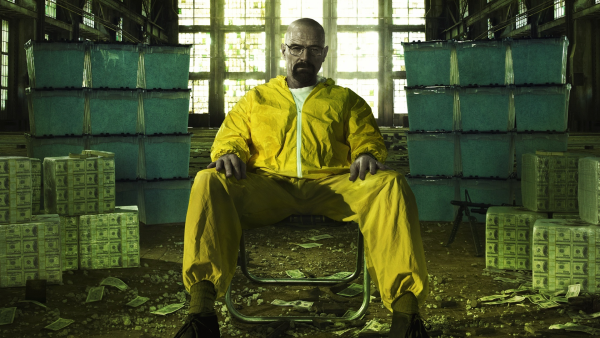Netflix: The rise and fall of the streaming empire
Streaming services have boomed in popularity, and now Netflix has competition with other streaming giants.
Feb 26, 2023
In 2007, Netflix began its on demand streaming program in the United States. Taking the leap from DVD rentals to streaming was a giant risk with a dramatic payoff. Now, Netflix serves 230 million subscribers across the globe and is ranked 115th in the Fortune 500. But, as the field of streaming becomes more crowded, will the company that started the streaming fire be the first to burn out?
Netflix launched in 1997 under its two founders, Marc Randolph and Reed Hastings. Upon entering the at-home entertainment market, Netflix originally allowed renters to rent a title, and have it shipped to them through the mail, and then return the title with no late fees, handling fees, or shipping fees. After launching this, CEO of Amazon, Jeff Bezos, offered the two founders $16 million dollars for the company, which Hastings eventually shot down. As Netflix transitioned to a subscription method, where subscribers pay a flat fee to rent movies monthly at their convenience, Netflix began to flounder financially. On top of changing a subscription method, the company followed the ‘dot com’ movement of the 2000s, creating a website for their company. Due to their financial struggles, Randolph and Hastings offered their company to Blockbuster for $50 million dollars, to which Blockbuster CEO John Antioco laughed at.
But, despite Netflix’s financial struggles, a large layoff, and bringing the company public, Netflix was just beginning to grow. In 2003, Netflix turned its first profit, and by 2005, the company was shipping out an estimated 1 million DVDs a day. In 2007, Netflix established its online streaming service. But, the rental service still proved to be far more popular considering the vast amount of titles available to rent, compared to the 1,000 titles available on the streaming service. Finally, in 2009, just two years after its introduction, Netflix’s streaming service profits overtook its DVD rental service. People in entertainment could no longer ignore the power that Netflix had when it came to distribution of media. In 2010, Netflix made deals with production companies such as Warner Brothers, Universal, and 20th Century Fox to delay streaming new releases to almost a month after the release so that production companies could still profit off of DVD releases. Also in 2010, Sony Pictures distributed the rights of Breaking Bad to Netflix, in hopes that online streaming ratings would save the show. Their hopes were fulfilled, and Breaking Bad ratings had more than doubled by the airing of its fifth season, largely due to subscribers being able to binge the past four seasons on Netflix.
Beginning in 2013, Netflix began a runaway train of producing original content, starting with Orange is the New Black in 2013. On top of producing their own original content, Netflix began signing contracts to produce original content for Marvel and Star Wars, Disney’s largest franchises. In 2016, just three years after Netflix began producing original content, Netflix’s original catalog had ballooned to 126 TV shows and films. Netflix’s success in this era cannot be understated. Well-loved shows like The Office, Friends, Community and Seinfeld brought subscribers to the platform, and Netflix’s massive original catalog kept viewers paying Netflix’s monthly price. Netflix has had an incredible run when it comes to creating a streaming empire. For so long, they’ve been considered the standard when it comes to on-demand content. But, as more and more production companies and television networks realize they can turn a similar profit to Netflix, the streaming field becomes more crowded, and streaming services that once aspired to be Netflix are now surpassing them.
As of right now, Netflix’s real competition lies in four specific streaming services. Of these include Hulu, who reported 47.2 million subscribers at the end of 2022, Disney+, who reported 164.2 million subscribers, HBO Max, who reported 48.6 million subscribers, and Paramount+, who reported 66.5 million subscribers in quarter 3 of 2022. Of these services, Netflix is the most established and longest-running streaming platform, giving it a leg up over other streaming companies. Along with this Netflix, doesn’t feature ads on the platform (yet), making it a bit more desirable than other streaming platforms that have an ad plan. But, Netflix finds itself stumbling to be able to keep subscribers, for a multitude of different reasons. One of these reasons includes the mass cancellation of shows that people are genuinely interested in. A few of the more popular original titles that have fallen victim to mass cancellation include The Society, Anne With An E, Santa Carita Diet, and The Patriot Act. As Netflix continues to dump shows that viewers love, the streaming giant has garnered many people who are turning on the streaming service, and instead turning to Netflix’s competitors. Hulu and HBO Max have seen a sharp upturn in subscriber ratings as they climb the totem pole of streaming services. HBO Max’s original content such as Euphoria, The White Lotus, House of the Dragon, The Last of Us and Succession have garnered a large following online and mass critical acclaim, alongside a long list of award nominations and wins. A part of these shows’ cultural success is the method HBO Max uses to distribute the content. HBO Max, unlike Netflix, utilizes a weekly release schedule. HBO Max’s original TV content usually runs in a ten-week 60 minute slot, dropping episodes at 9pm ET on Sunday nights during a show’s run. HBO Max’s current 9pm Sunday slot is occupied by The Last of Us. In the past, it’s been occupied by Euphoria, which was one of the most live-tweeted shows of all time in 2022, and the 9pm Sunday slot will return to Succession for its season four run after The Last of Us season one’s finale. This model has garnered acclaim from subscribers as making content more digestible and more enjoyable to watch. Some could even accredit HBO Max with bringing back “water-cooler” discussions, finding many people discussing Sunday night’s episode Monday morning with friends or co-workers. Compared to Netflix’s most recent episode release model, releasing the first half of a season and then the second half of a season the next month, the weekly episode drop is far more successful at maintaining people’s attention.
On top of not being able to keep up with subscriber episode release preferences, Netflix has also successfully shot themselves in the foot with their recent password sharing updates. Netflix’s new user guidelines for password sharing involves users sharing an account to be connected to the same WiFi, which is their ‘Home WiFi Source’. If devices linked to a shared account move from their Home WiFi Source, or do not reconnect to their Home WiFi source at least one time in the span of a month, they will effectively be blocked from the account. For the college students still on their parents, friends, or family’s Netflix account, these new guidelines put students at risk of being blocked from the streaming platform. On top of Netflix’s talk to add an ad payment plan similar to Hulu or HBO Max, this jeopardizes the streaming platform’s subscriber rate massively. Netflix doesn’t understand that now that streaming is such a crowded market, college students who are at risk of being blocked from their parent’s account might not return to the service at all, contrary to what Netflix is hoping for. With a vast variety of platforms to choose from to go to instead, Netflix serves little to no purpose for that audience anymore. Canceling the shows that a large majority of students enjoy, preventing students from watching the little content they still enjoy from the platform, can lead to Netflix’s inevitable downfall.
Netflix revolutionized the way we consume media. It brought streaming to the forefront of entertainment, and borderline destroyed the physical forms of media, such as DVDs, in favor of streaming. But, as time goes on and more and more networks or production companies enter the streaming industry, Netflix doesn’t have as large of a pull on audiences as it has in the past. Making sweeping changes to its interface, its catalog, and its user guidelines could destroy the very service that pioneered the streaming service empire.

















